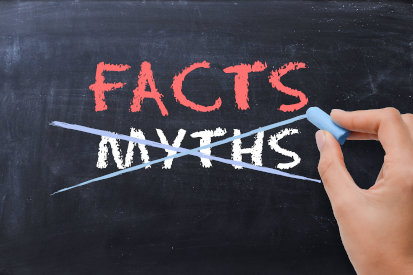Over 50,000 tax and super scams were reported in 2021, with the average dollar amount lost per scam at $5,600.
You may have some preconceived notions about the types of people who fall prey to scams, thinking that this would never happen to you. This is a common reaction and has prompted the Australian Taxation Office (ATO) to shed some light on common scam myths.
Common scam myths
Myth #1: Only older people fall for scams
While you may think that most people who fall for scams are the elderly and vulnerable, in the last three years, younger Australians have in fact fallen victim to the most tax scams. In 2021, people aged 25 to 34 reported the most amount of money lost to tax scams, closely followed by those aged 18 to 24. In contrast, those aged 55 and above were among those who reported the least financial losses to the ATO.
Myth #2: Scams are easy to spot. You’d be a fool to fall for one!
You may think that all scams are full of typos, bad grammar, and promises of riches from Nigerian princes. However, scams are becoming much more sophisticated, mimicking official websites and containing convincing language and messages.
Myth #3 – Scams only happen during tax time
Tax and super scams happen year-round, not only at tax time. Common scams that occur throughout the year include:
- Phone calls about a fake tax debt where arrest for non-payment is threatened.
- Text messages saying that you are suspected of being involved in cryptocurrency tax evasion.
- Emails impersonating the ATO, asking you to update your financial information so that a tax refund can be processed.
Recent scam trends
While over 90 percent of scams are conducted via phone, over the past year there have been increasing numbers of email (phishing) and SMS (smishing) scams. Text messages and emails often prompt you to click a link and then attempt to steal your personal details and financial information.
ATO Assistant Commissioner Tim Loh said “Right now, we’re seeing a lot of SMS and email scams leading to fake myGov sign-in pages – we’ve had more than 360 of these scams reported since April 2022.”
In the last 12 months, the ATO has identified and taken action against 595 websites impersonating its online services.
The top three tax and super scams reported in 2021 were related to:
- Threats of arrest.
- Fraudulent TFN activity.
- Fake tax debts.
How to protect yourself
Being aware of the common scam myths and recent trends can help you to become increasingly vigilant. The ATO provides further advice to protect yourself against scams.
If you receive an email or SMS claiming to be from the ATO, there are some common signs to look out for which are indicative of a scam. The ATO will never:
- Send an unsolicited message requesting personal information via a return email or SMS.
- Send an email or SMS with a link to log in to its online services.
- Ask you to pay a fee to receive a refund.
Other key tips to protect yourself include:
- Protect personal information like it’s your credit card number.
- Never share your usernames or passwords with anyone.
- Be careful about clicking on links, even if a message seems to come from a legitimate source.
- If you are unsure whether it’s really the ATO, do not engage or reply. Instead, phone the ATO on 1800 008 540 to check if it’s legitimate.
- Only log onto ATO online services directly, never via a hyperlink.
- You can check the status of your refund using the ATO app.
Key takeaways
It’s not only the elderly and the naïve who become victims of tax and super scams. These scams, which happen year-round, are becoming increasingly sophisticated and are deceiving all age groups, especially Millennials and Gen Z. It is important to be aware of common scam myths, recent scam trends, and tips to protect yourself, to ensure that you don’t become a scam victim.



